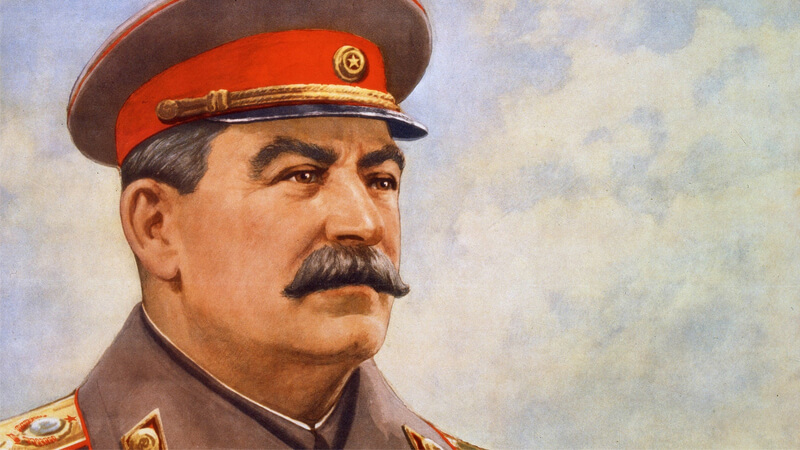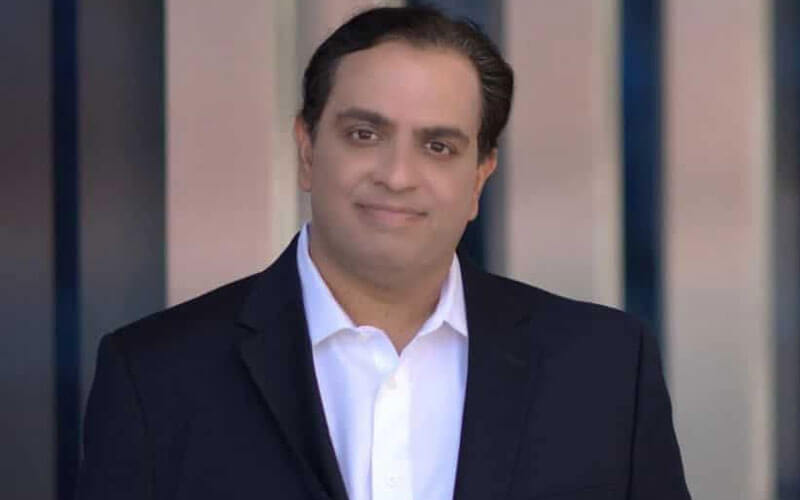Soviet leader that governed ironically the USSR from 1929 (year when it was erected like successor of Lenin after the exile of Trotsky) until his death in 1953. At the price of bloody repression and immense sacrifices imposed on the population.
Stalin was able to convert semi feudal Russia into an economic and military power capable of contributing decisively to the Allied victory in World War II (1939-1945).
In the new post-war order, the United States and the USSR divided areas of influence; Stalin extended his power by establishing Communist regimes in Eastern Europe and encouraging them in other countries.
See Also: Biography of Martin Luther King
The clash of interests and ideologies led to the “cold war” between the two superpowers, which continued after Stalin’s death; in fact, the climate of tension between the capitalist and communist blocs would define the international scenario until the dissolution of the USSR in 1991.
Biography of Joseph Stalin
- Born:- 18 December 1878, Gori, Georgia
- Died:- 5 March 1953, Kuntsevo Dacha, Moscow, Russia
- Spouse:- Nadezhda Alliluyeva (m. 1919–1932), Kato Svanidze (m. 1906–1907)
- children:- Svetlana Alliluyeva, Yakov Dzhugashvili, Vasily Stalin, Artyom Sergeyev
- Previous offices:- Minister of Defence of the Soviet Union (1941–1947
- Education:- Tbilisi Spiritual Seminary(1894–1899), Gori Church School (1889–1894)
Iosif Dzhugashvili was the son of a poor and alcoholic cobbler of the Caucasian region of Georgia, subject to the Russia of the Tsars. He was an orphan very early and studied at an ecclesiastical seminary, where he was expelled for his revolutionary ideas (1899).
He then joined the clandestine struggle of the Russian Socialists against the Tsarist regime; when in 1903 the Social Democratic Party split, it followed the Bolshevik faction that Lenin led.
He was active militant and persecuted until the triumph of the Bolshevik Revolution of 1917, time from which proceeds its nickname of Stalin (“man of steel”).
Loyalty to Lenin and the lack of ideas of his own allowed him to rise in the bureaucracy of the party (renamed Communist Party), until becoming general secretary in 1922.
Stalin then undertook a struggle with Trotsky for the succession of Lenin, who, already very ill, would die in 1924. Although the leader of the Revolution had indicated his preference for Trotsky (considering Stalin “too cruel”), Stalin maneuvered by taking advantage of his control over the information and apparatus of the Party, allied with Zinoviev and Kamenev until imposing itself to Trotsky.
The struggle for power was disguised as ideological arguments, defending each side a strategy to consolidate the communist regime: the construction of socialism in one country (Stalin) against the permanent revolution on a world scale (Trotsky).
But the true motive of Stalin was the ambition of power: once Trotsky (who was exiled in 1929 and then assassinated in 1940), he also got rid of the “left” wing of the party (Zinoviev and Kamenev, executed in 1936) and the «right» wing (Bukharin and Rikov , executed in 1938), and instituted a bloody personal dictatorship, appropriating the political ideas which their rivals had sustained.
The USSR under Stalin
Stalin ruled the tyrannical Soviet Union from the 1930s until his death, implanting the most totalitarian regime ever to exist; but it must also be attributed to him the realization of the communist socio-economic project in Russia, the extension of his model to other neighboring countries and the conversion of the USSR into a great power.
Radicalizing the authoritarian tendencies present among the Bolsheviks since the Revolution, he removed from the Marxist-Leninist project all traces of democratic or emancipatory ideas: it abolished all freedoms, denied the slightest pluralism and terrorized the population by establishing a police regime.
Willing to eliminate not only dissidents or suspects, but anyone who could have any prestige or influence of his own, he launched against his fellow Communists successive purges that decimated the party, eliminating the plan of the Revolution.
With the same violence imposed the forced collectivization of agriculture, exterminated or transferred whole peoples as punishment or to solve problems of national minorities, and subjected the entire productive system to the strict discipline of mandatory central planning.
With immense human losses, however, it achieved spectacular economic growth through the five-year plans: priority was given to accelerated industrialization, based on the development of the energy sectors and heavy industry, at the cost of sacrificing the welfare of the population, subjected to very harsh working conditions and great deprivations in consumption.
The repression prevented the expression of the malaise of the working masses, barely compensated by the improvement of the state transport, health and education services.
At this price Stalin would make the Soviet Union a great power, capable of winning World War II (1939-1945) and of sharing hegemony with the United States in the later bipolar order.
From the Second World War to the “Cold War”
Stalin was an ambitious and realistic politician, driven by considerations of power and not by revolutionary ideals. This Machiavellianism was most palpable in its foreign policy, where the cause of socialism was systematically deferred to Russia’s national interests (turning foreign communist parties into mere instruments of Soviet foreign policy). In the days leading up to World War II, he had no hesitation in signing a non-aggression pact with Nazi Germany to ensure tranquility on its borders, the partition of Poland and the annexation of Estonia, Latvia and Lithuania (German-Soviet Pact of 1939).
Nevertheless, Adolf Hitler invaded the USSR, dragging Stalin to war in 1941. Stalin effectively mobilized the country’s energies by appealing to his nationalist sentiments (he proclaimed the Great Patriotic War ): he organized the evacuation of industry from the western regions towards the Urals, adopting a strategy of “scorched earth”.
With the help of the climate, the great distances and the guerrilla warfare of the partisans, it weakened the Germans until they recovered and moved on to the counteroffensive after the Battle of Stalingrad (1942-1943). Then the Russian advance would be overwhelming until reaching beyond Berlin.
At the Tehran Conference (1943), he agreed with British Prime Minister Winston Churchill and US President Franklin D. Roosevelt on the strategy of war. Reinforced by victory, Stalin negotiated with the United States and Britain the post-war international order (Yalta and Potsdam Conferences, 1945), obtaining recognition of the USSR as a great power (with a veto in the UN, for example).
The Allies had to accept Soviet influence in Eastern Europe, where Stalin established a cordon of “popular republics” with communist satellite regimes of the USSR.
Stalin maintained the inertia of the war, delaying the demobilization of his army until he was able to dispose of atomic weapons (1951) and encouraging the spread of communism to countries where indigenous revolutionary movements existed (such as Greece, Turkey, China and Korea).
See Also: Biography of Leon Trotski
The American resistance to their plans gave rise to the “cold war”, a climate of bipolar tension on a world scale between a communist bloc and a capitalist western bloc.
Formally, the most acute phase of the cold war ended with the death of Stalin; his successor, Nikita Khrushchev (1953-1964), promoted the doctrine of the “peaceful coexistence” of the two great powers, which turned out to be a rhetorical fiction: open or subterranean conflicts through third countries continued, and the cold war would endure until the fall of the Berlin Wall (1989) and the dissolution of the USSR (1991).
In the 20th Congress of the CPSU (1956), Khrushchov denounced ideological deviations and crimes of the previous period, beginning with the expulsion of Stalinists from the party, to the process of de – Stalinization of the State.




